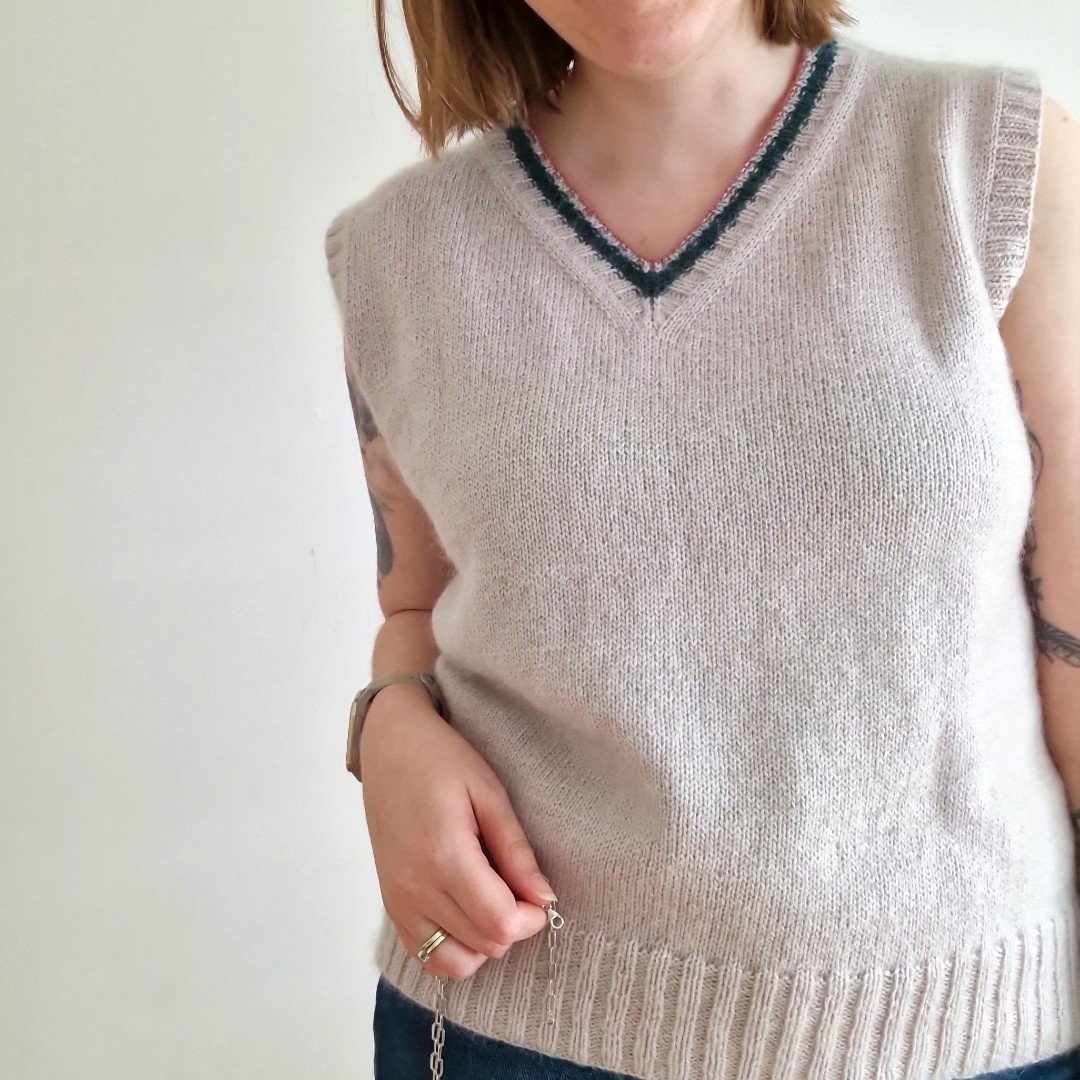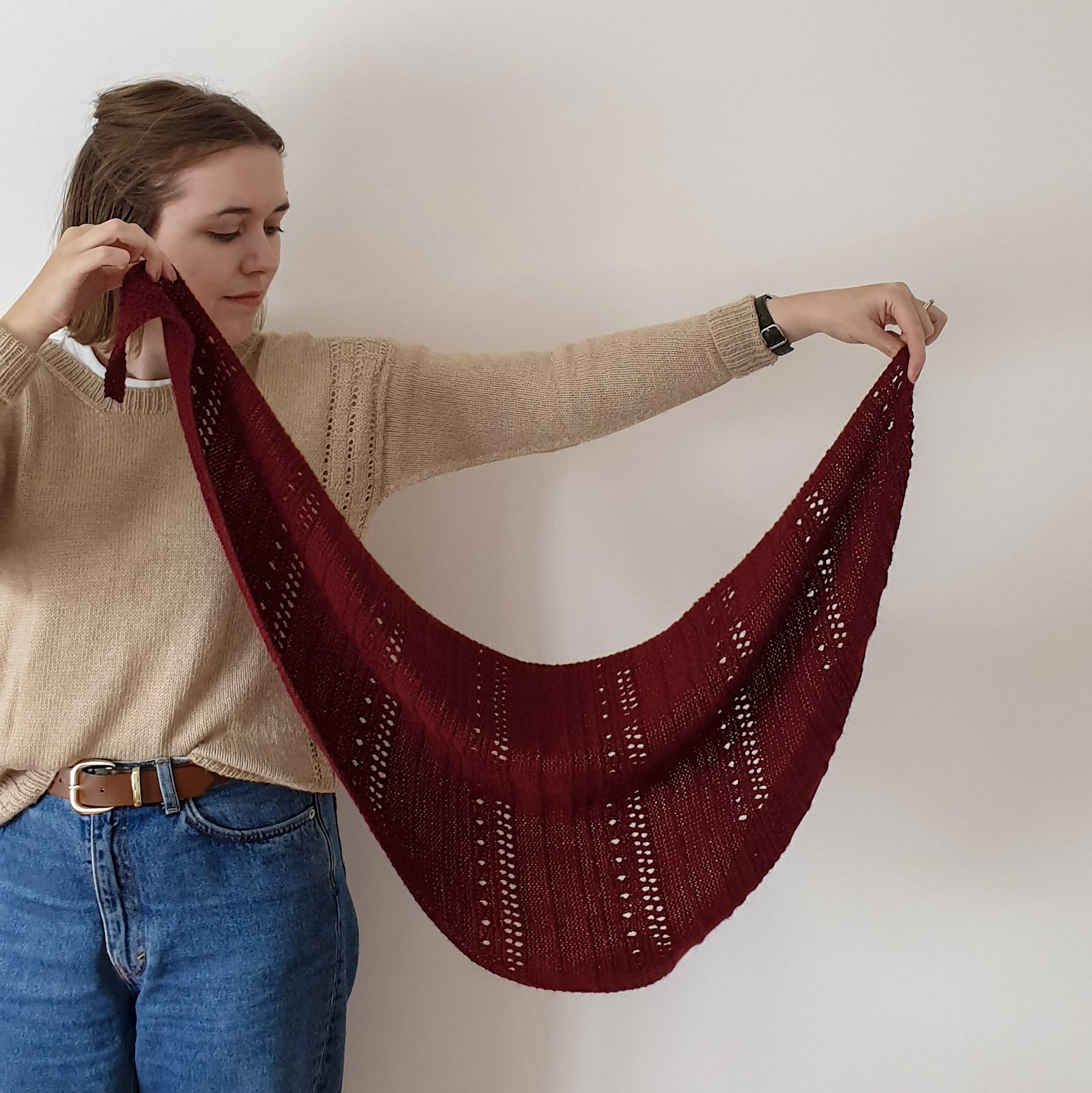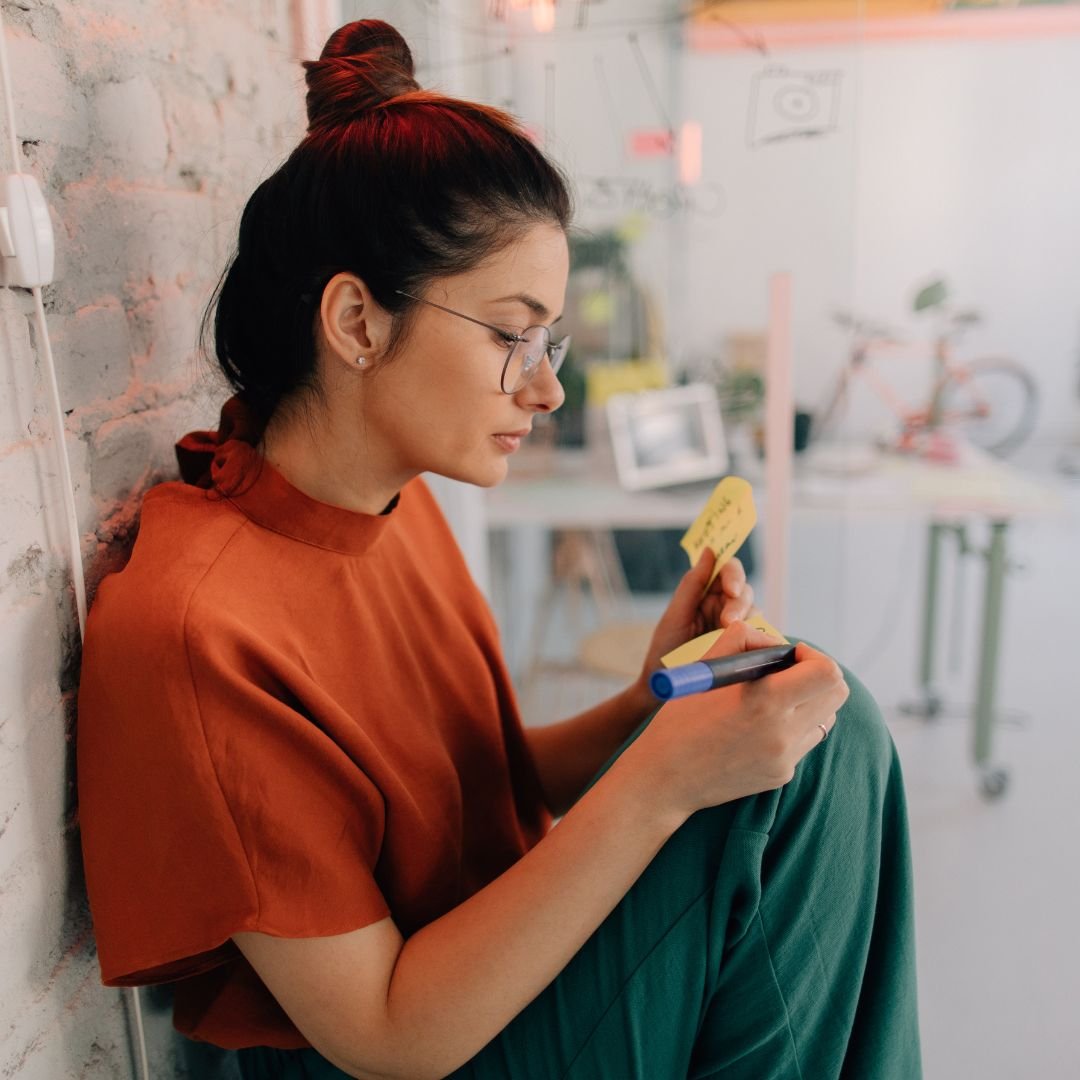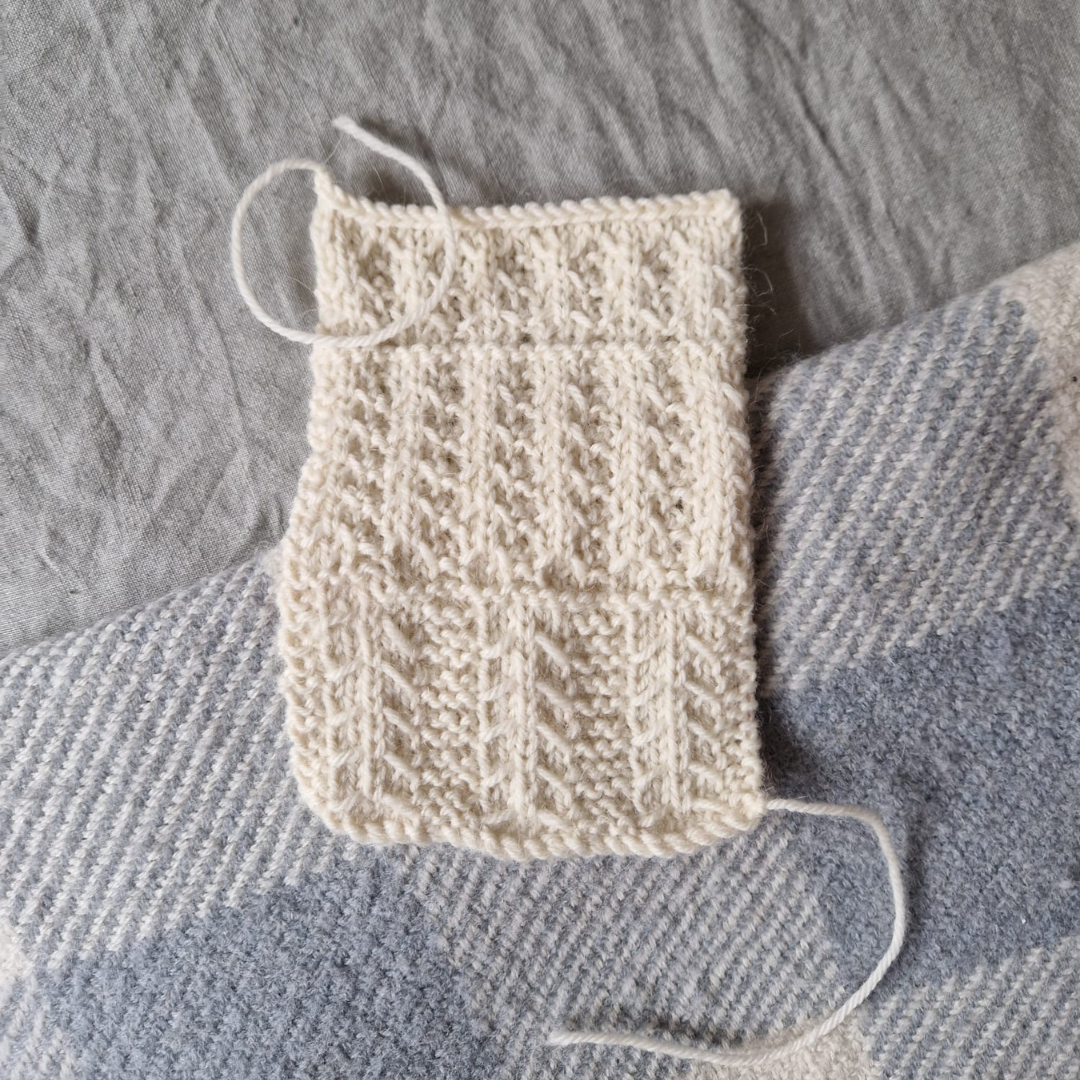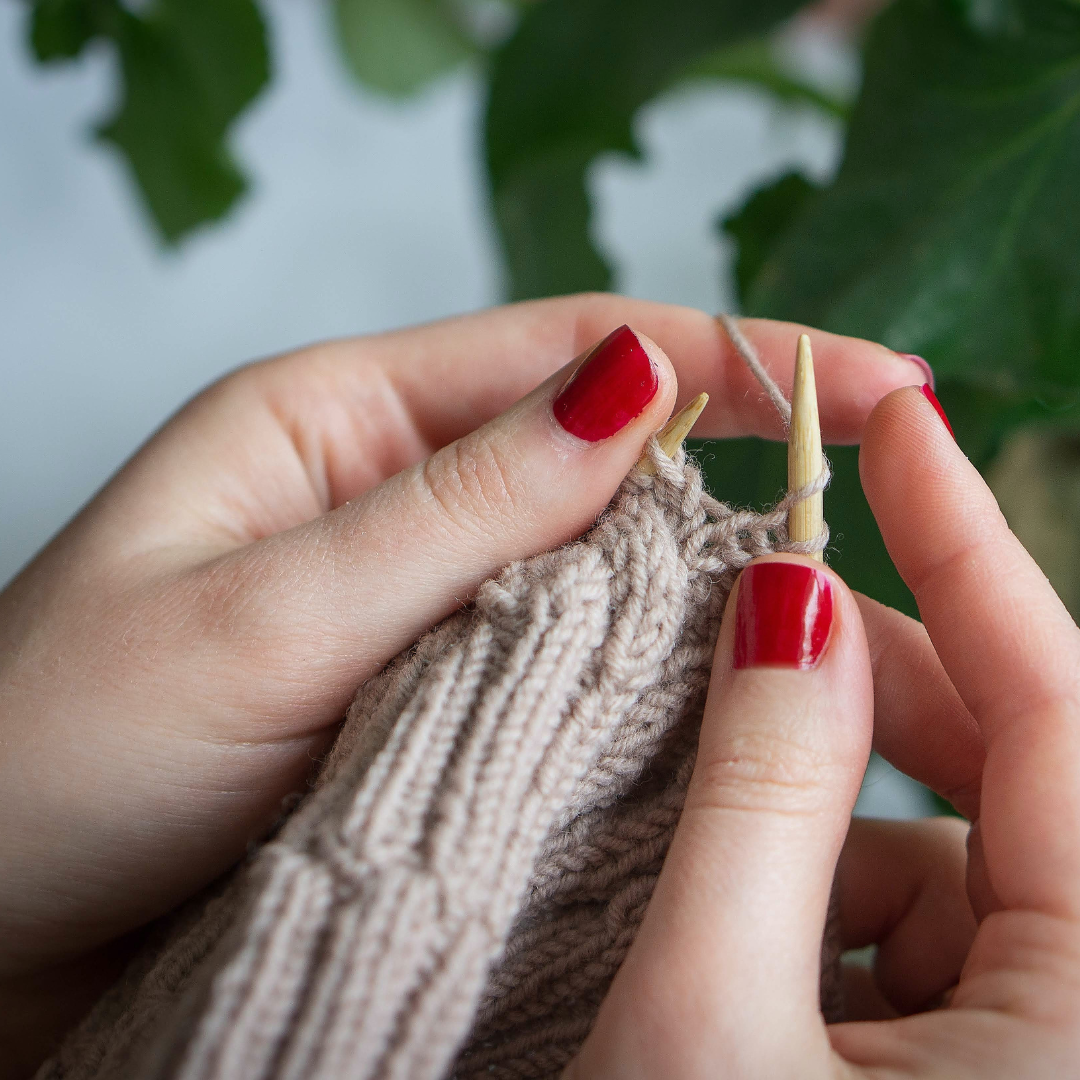Do Knitting Pattern Designers Need to Be Tutorial Makers, Too?
Have you ever wondered if you really need to create your own tutorials? As a knitting pattern designer, I've explored this question head-on, creating my own tutorials as well as linking to others'.
When I started designing, I spent hours filming and editing my own tutorial videos, breaking down the techniques in the simplest way I could to help guide knitters through my patterns.
But I've also found immense value in linking to tutorials by other talented knitters, saving time and sharing excellent teaching with my customers.
In this post, I'll share my experiences and insights on both approaches, exploring why you might want to choose one over the other.
Image description: A person holds up their ribbed knitting project during a tutorial. The text over the images says, Do Knitting Pattern Designers Need to Be Tutorial Makers, Too?
Why You Might Want to Make Your Own Knitting Tutorials
Building a Brand
As a knitting pattern designer, creating your own tutorials is an excellent way to build your brand.
When you make a tutorial, you’re not just teaching a technique; you're also showcasing your expertise. This can establish you as a trusted teacher in the knitting community. For example, a tutorial is a great way to highlight if you have a signature technique or a unique method that sets your designs apart.
As a bonus, when knitters see and hear you explain a technique, they connect with your brand on a more personal level. This connection can turn casual followers into loyal fans.
Consistency in Teaching Style
Creating your own tutorials gives your customers access to a consistent teaching style that complements your patterns. This consistency can make it easier for your followers to learn as they become familiar with your way of explaining and demonstrating techniques.
Using Your Skill Set
If you’re comfortable with video editing or photography and enjoy the process of teaching, creating your own tutorials can be a fun extension of your design work. It allows you complete control over the style of the tutorial and ensures that it aligns perfectly with your pattern.
SEO and Web Traffic Benefits
Hosting tutorials on your website can be a great long-term strategy for getting found via Google (SEO). While the boost in SEO and web traffic may not be immediate, consistently publishing quality content like tutorials can gradually increase your website’s visibility and attract more visitors. This steady growth contributes to a stronger online presence and, ultimately, more exposure to your patterns.
Image description: A woman with short blond hair and tattoos is sitting in a blue shirt filming a knitting tutorial using her phone and a tripod. The text says, Do Knitting Pattern Designers Need to Be Tutorial Makers, Too?
Why You Might Decide to Link to Other Creators' Tutorials Instead
Recognising Your Skillset
Creating tutorials is a skill in itself, involving clear communication, filming or photographing, and editing. If these are outside your skillset, or if you're not comfortable in this role, it makes sense to share tutorials made by others. This ensures your audience still receives high-quality instructional content, even if it's not directly from you.
Not an Expert
As a knitting pattern designer, you might specialise in certain techniques, while others are not your forte. Acknowledging this and linking to tutorials from creators who are experts in these areas makes sure that your customers get the most accurate and helpful guidance when trying an unfamiliar technique.
Time Constraints
Making tutorials is time-consuming. Filming or photographing, editing, and ensuring that every detail is correct can eat into your time for designing new patterns. If you have limited time available for your design work, linking to existing tutorials is a practical solution that still supports your customer’s needs.
Focus on Designing Patterns
I’m going to guess that your primary passion is designing knitting patterns, so if you'd prefer to channel your energy and creativity into design work rather than tutorial creation, that's a valid choice. Linking to other tutorials allows you to stay focused on what you love and do best.
Presenting Your Tutorials
If you do decide to create your own knitting tutorials, you'll generally find yourself choosing between two popular formats: video and photo tutorials.
Each format has its own set of strengths and is suited to different kinds of content and learning styles. Understanding these can help you make an informed decision about which format aligns best with your teaching approach and the needs of your audience.
Video Tutorials
Video tutorials are a fantastic way to teach your audience, especially when dealing with complex techniques that are best demonstrated in motion. They allow knitters to see the exact movements and techniques over and over again.
However, creating high-quality videos can be time-consuming and requires proper equipment and editing skills. Also, only some people prefer learning through videos. Without captions, they can be inaccessible to some learners.
You might choose video tutorials when the technique you're teaching is intricate and is best understood through a visual demonstration.
Image description: Close up of someone's hands as they knit ribbing using a fine white yarn.
Photo Tutorials
Photo tutorials, typically accompanied by explanatory text, offer a clear, step-by-step approach to learning a technique. They are generally easier and less time-consuming to produce than videos.
Photo tutorials are convenient for knitters who prefer to follow at their own pace and easily refer back to specific steps.
However, they don’t teach complex techniques as effectively as videos. Photo tutorials are ideal for more straightforward techniques or when focusing on specific details that are easily captured in an image.
The Best of Both Worlds
You may also consider combining video and photo tutorials. By embedding your YouTube video tutorials onto your website, along with a photo tutorial, you cater to a broader range of learning styles and preferences. This approach offers both the visual dynamics of video and the detailed focus of photos.
It not only increases your reach, attracting some viewers through YouTube and others directly through your website but also makes it easier to be found on Google.
Conclusion: Do Knitting Pattern Designers Need to Be Tutorial Makers, Too?
There's no one-size-fits-all approach here. If creating detailed video or photo tutorials excites you, that’s great. If you prefer to link out to the vast resources already available within our community, that’s also great!
The most important thing is that you're providing helpful resources to your audience so that they can get fantastic results from your knitting patterns.
So, I’m curious – what has been your experience with creating or linking out to tutorials? Have you found a preference for one over the other, or do you enjoy a blend of both? I’d love to hear about your experiences, so please share them in the comments below!




